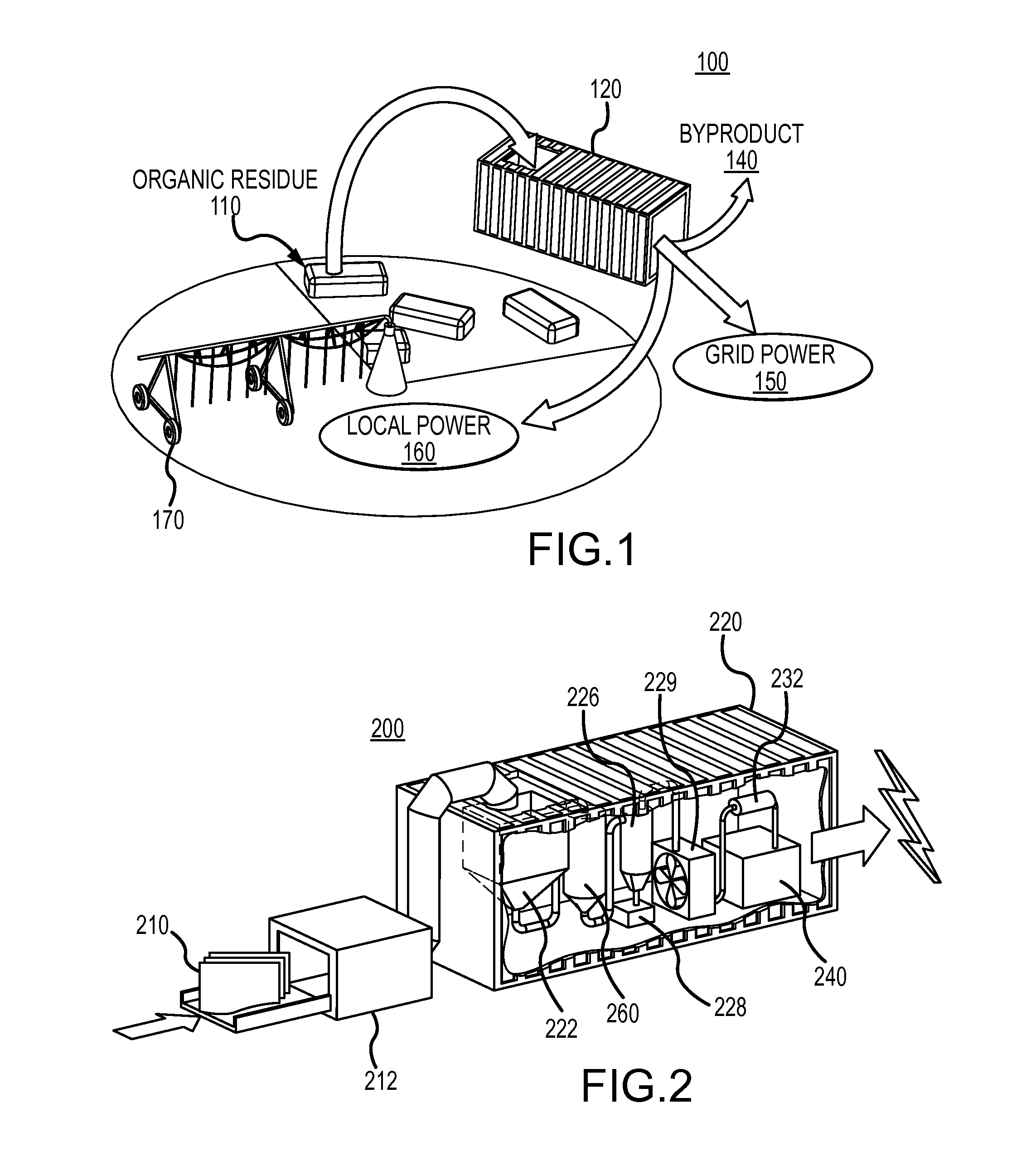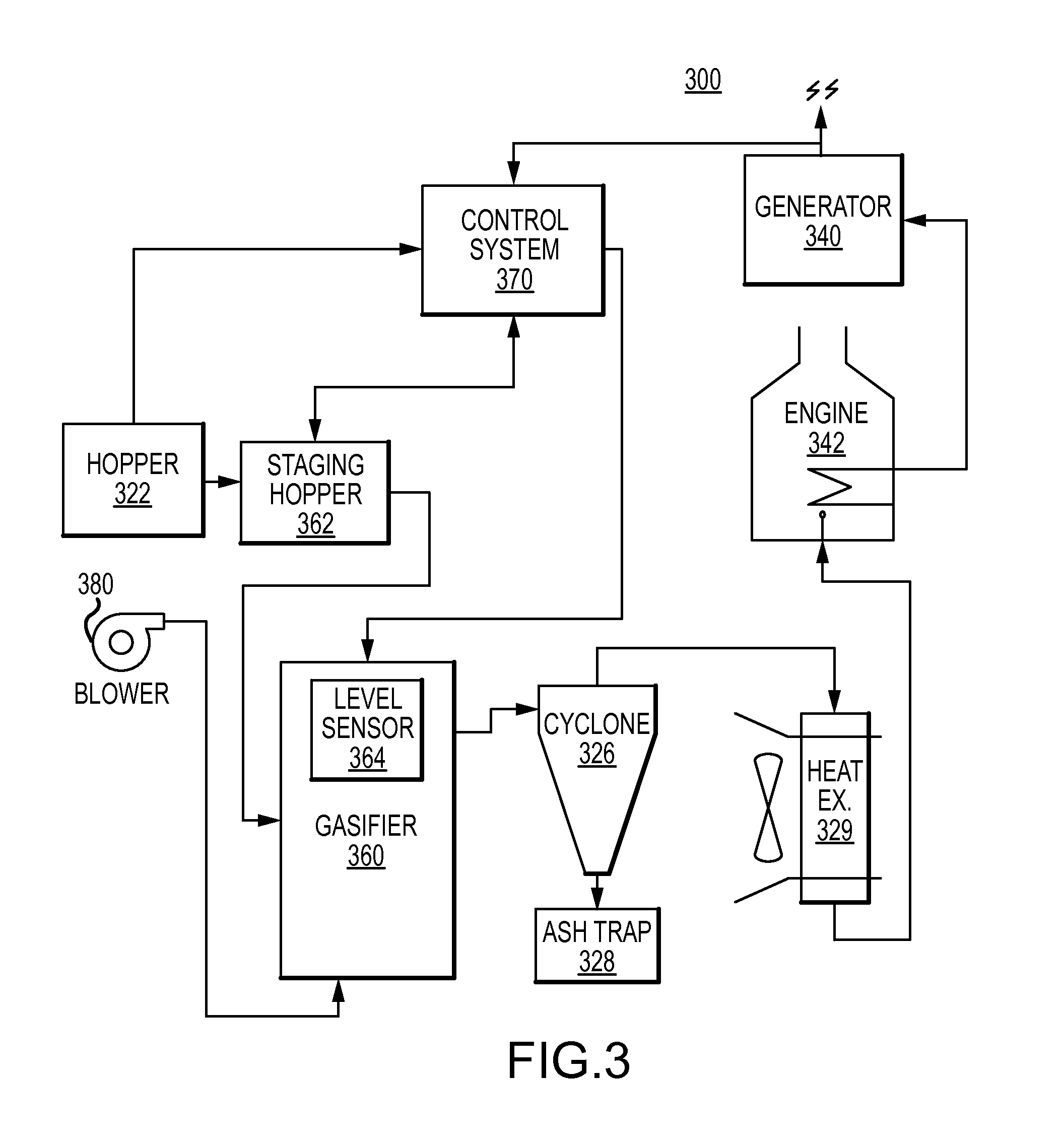Apparatuses, systems, mobile gasification systems, and methods for gasifying residual biomass
a technology of residual biomass and gasification system, which is applied in the direction of gas dust removal, combustible gas purification/modification, combustible gas production, etc., can solve the problems of increasing energy costs, few advancements in technology, and agricultural industries that have been some of the hardest hit, so as to save power and tillage costs for farmers, and minimal maintenance requirements
- Summary
- Abstract
- Description
- Claims
- Application Information
AI Technical Summary
Benefits of technology
Problems solved by technology
Method used
Image
Examples
Embodiment Construction
[0028]The present disclosure is generally directed to a mobile gasification system that may be used to fulfill the needs for sustainable energy solutions across the wide breadth of the agricultural industry. The mobile gasification system may use organic matter, such as residual biomass from a farming operation, to produce power for use in agricultural applications and / or for sales to the grid. While farming operations are the primary focus of this disclosure, other agricultural operations, such as logging, cultivation of algae, etc., are within the purview for use of the systems of this disclosure. Many of the specific details of certain embodiments of the disclosure are presented in the following description and in FIGS. 1-11, to provide a thorough understanding of such embodiments. One skilled in the art will understand, however, that the present disclosure may have additional embodiments, or that the present disclosure may be practiced without several of the details described in...
PUM
| Property | Measurement | Unit |
|---|---|---|
| angle of repose | aaaaa | aaaaa |
| threshold temperature | aaaaa | aaaaa |
| gas velocities | aaaaa | aaaaa |
Abstract
Description
Claims
Application Information
 Login to View More
Login to View More - R&D
- Intellectual Property
- Life Sciences
- Materials
- Tech Scout
- Unparalleled Data Quality
- Higher Quality Content
- 60% Fewer Hallucinations
Browse by: Latest US Patents, China's latest patents, Technical Efficacy Thesaurus, Application Domain, Technology Topic, Popular Technical Reports.
© 2025 PatSnap. All rights reserved.Legal|Privacy policy|Modern Slavery Act Transparency Statement|Sitemap|About US| Contact US: help@patsnap.com



